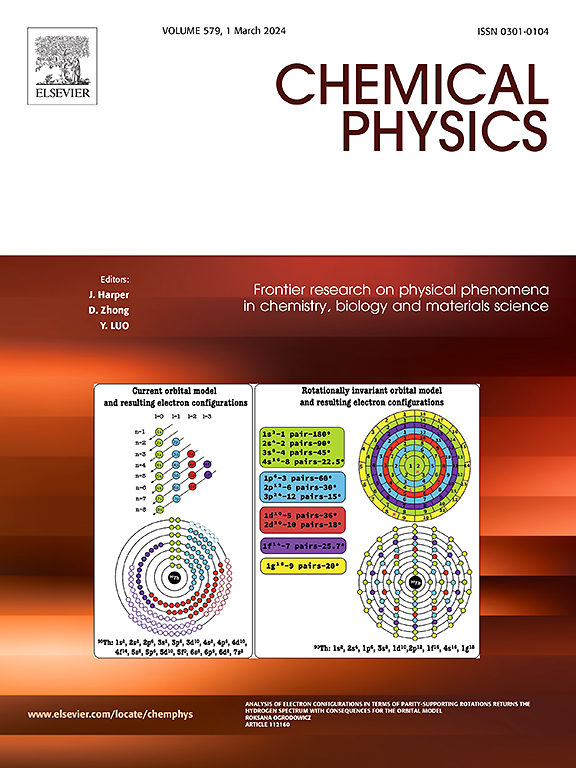玻璃化转变温度对金属玻璃化液体脆性参数影响的研究
IF 2
3区 化学
Q4 CHEMISTRY, PHYSICAL
引用次数: 0
摘要
在许多研究中,经常使用的由玻璃化转变温度Tg决定的m0.33,在加热速率q = 0.33 K/s时为0.33,与粘度η = 1012 Pa s时由Tg和η导出的Angell脆性参数mη进行了比较。尽管m0.33随mη整体呈增加趋势,但它不能准确量化η偏离Arrhenius关系的程度。几个反例表明,较大的m0.33对应较小的mη。对于23种金属玻璃形成液体,Tg 0.33对应的粘度范围为7.7 × 107 ~ 1.5 × 1012 Pa s。因此,m0.33是在不均匀的粘度标准下测定的,不能准确评价η偏离Arrhenius温度依赖关系。然而,m0.33可以通过乘以λ = (Tg,η/Tg,0.33) × [(Tg,0.33-T0)/(Tg,η-T0)]2转化为mη,其中T0为理想的动力学玻璃化转变温度。Tg,η/Tg,0.33的比值为0.962,高R2 = 0.979。利用Tg,η≈0.962Tg,0.33,可以得到一个更简单的近似表达式:mη≈0.962 × {(1-χ)/(0.962-χ)}2m0.33,其中χ为T0/Tg。本文章由计算机程序翻译,如有差异,请以英文原文为准。
Study on the effect of glass transition temperature on fragility parameter in metallic glass-forming liquids
The frequently used m0.33, determined by the glass transition temperature Tg,0.33 at a heating rate q = 0.33 K/s in numerous studies, is compared with the Angell fragility parameter mη, derived from Tg,η at a viscosity of η = 1012 Pa s. Although m0.33 exhibits an overall increasing trend with mη, it does not accurately quantify the degree of deviation from the Arrhenius relation of η. Several counterexamples indicate that a larger m0.33 can correspond to a smaller mη. For 23 kinds of metallic glass-forming liquids, Tg,0.33 corresponds to viscosities ranging from 7.7 × 107 Pa s to 1.5 × 1012 Pa s. Consequently, m0.33 is determined under non-uniform viscosity standards, making it unsuitable for accurately evaluating the departure of η from Arrhenius temperature dependence. However, m0.33 can be converted to mη by multiplying by a factor λ = (Tg,η/Tg,0.33) × [(Tg,0.33-T0)/(Tg,η-T0)]2, where T0 is the kinetic ideal glass transition temperature. The ratio Tg,η/Tg,0.33 is 0.962, with a high R2 = 0.979. By using Tg,η ≈ 0.962Tg,0.33, a simpler approximate expression can be given as mη ≈ 0.962 × {(1-χ)/(0.962-χ)}2m0.33, where χ is T0/Tg.
求助全文
通过发布文献求助,成功后即可免费获取论文全文。
去求助
来源期刊

Chemical Physics
化学-物理:原子、分子和化学物理
CiteScore
4.60
自引率
4.30%
发文量
278
审稿时长
39 days
期刊介绍:
Chemical Physics publishes experimental and theoretical papers on all aspects of chemical physics. In this journal, experiments are related to theory, and in turn theoretical papers are related to present or future experiments. Subjects covered include: spectroscopy and molecular structure, interacting systems, relaxation phenomena, biological systems, materials, fundamental problems in molecular reactivity, molecular quantum theory and statistical mechanics. Computational chemistry studies of routine character are not appropriate for this journal.
 求助内容:
求助内容: 应助结果提醒方式:
应助结果提醒方式:


